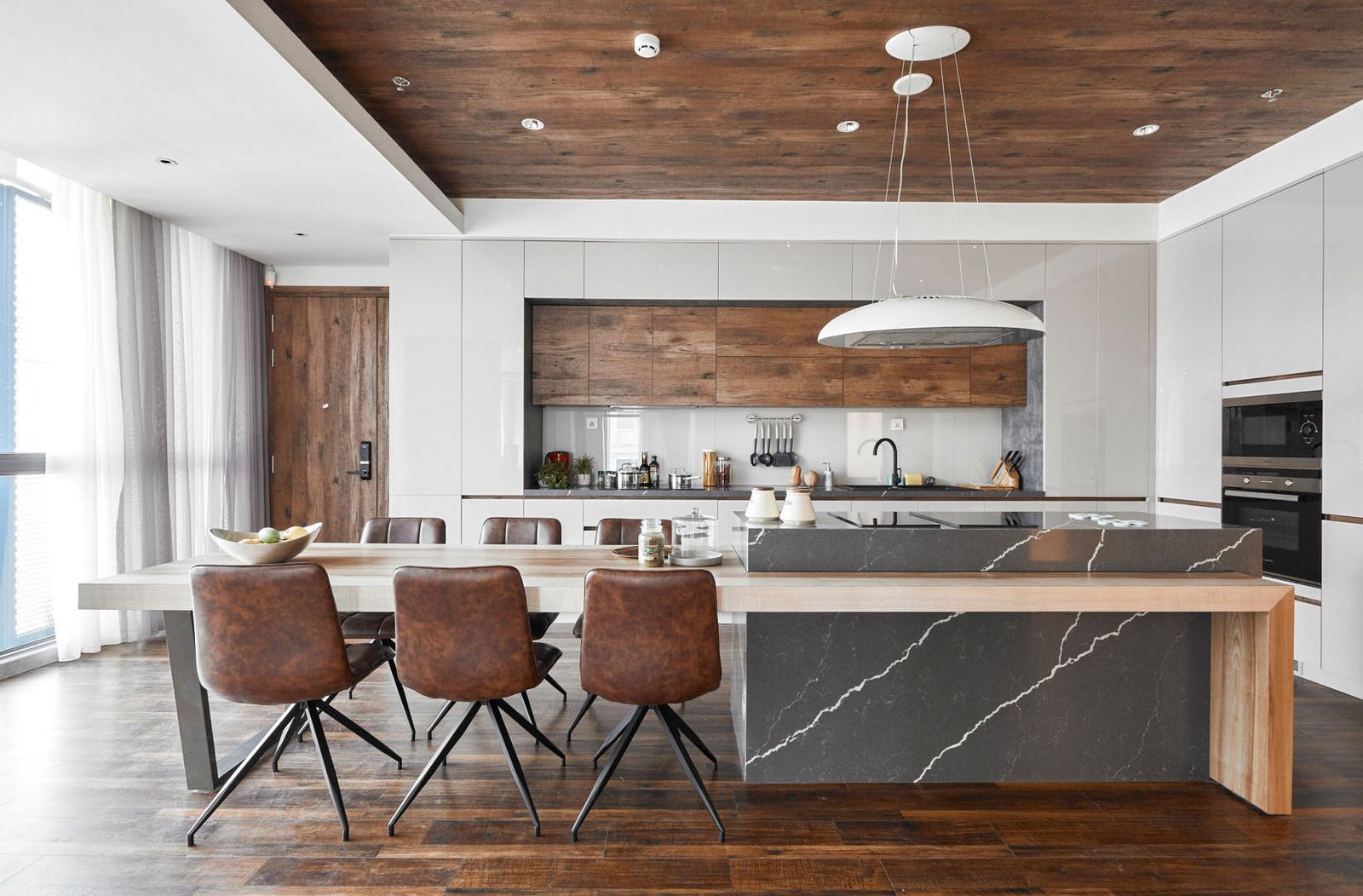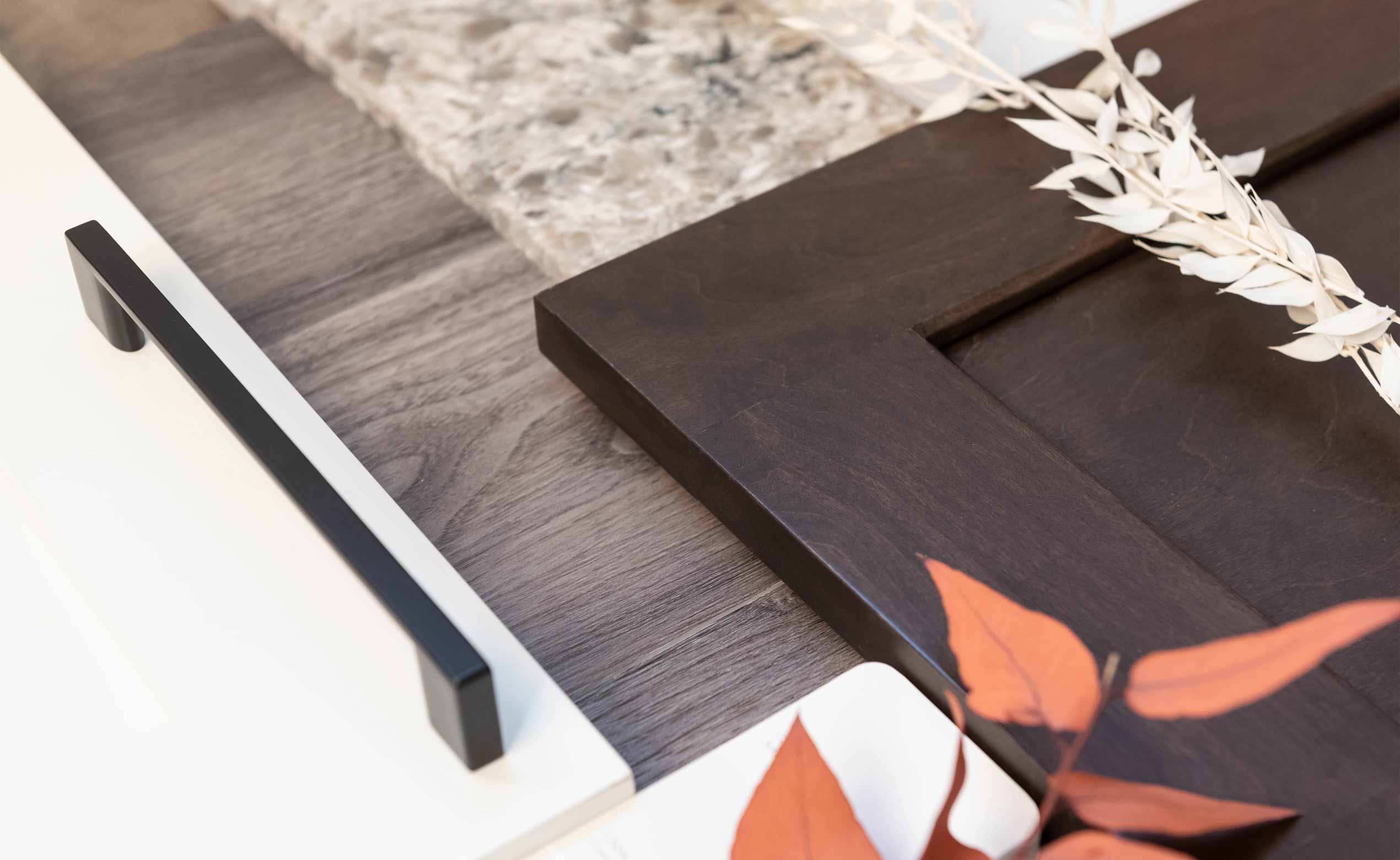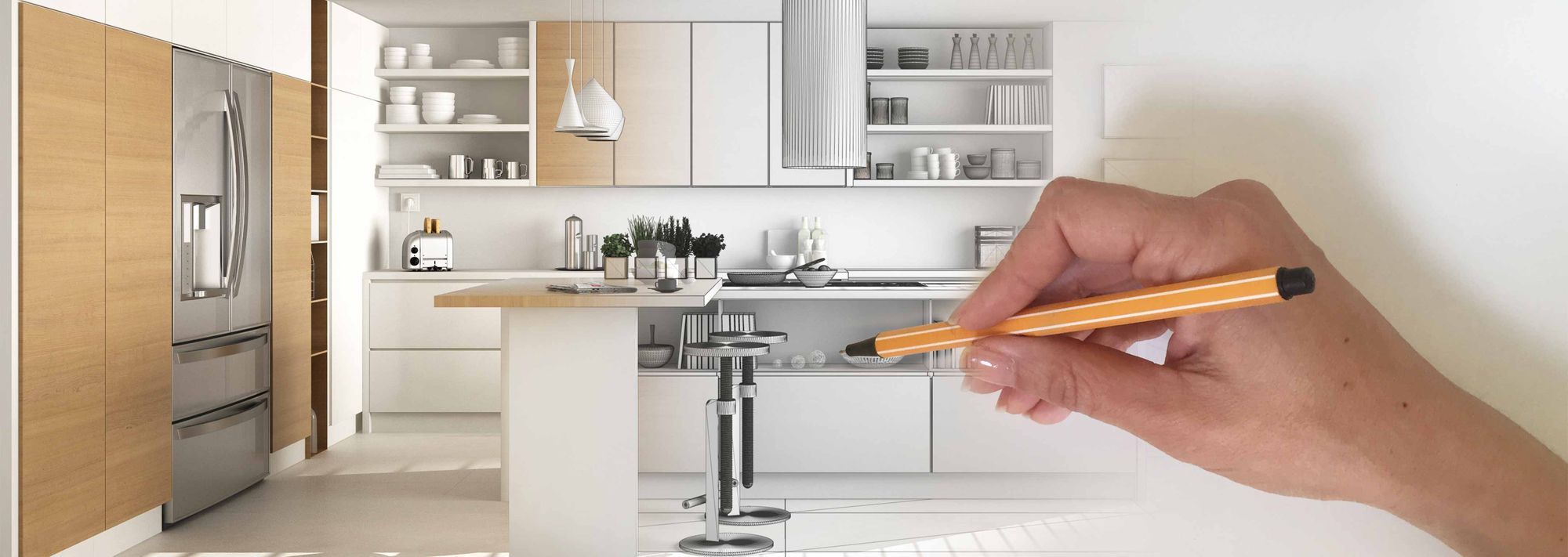The debate of “kitchen vs bathroom cabinets” goes beyond simple visual appeal; it involves a careful balance of utility, durability, and style tailored to each space’s unique requirements. Kitchens are the bustling heart of the home, where storage and efficiency are essential, while bathrooms require compact and moisture-resistant designs that maximize smaller areas.
Whether you’re planning a full renovation or just a minor update, we’ll explore the key differences between kitchen and bathroom cabinets to equip you with the insights needed to choose cabinetry that perfectly suits your space and lifestyle.
1. Design: Tailored for Purpose
One of the most noticeable distinctions in the “kitchen vs bathroom cabinets” debate is their design.
Kitchen Cabinets
These are designed to maximize storage and functionality in a high-traffic area. They are often taller, wider, and more spacious to accommodate items such as pots, pans, and small appliances. Kitchen cabinets also feature deeper drawers and more robust shelving systems.
Additional design considerations include extended counter overhangs for workspace and integration with larger appliances such as dishwashers and ovens, ensuring seamless kitchen operations.
Open shelving and glass-front cabinet options are common in kitchens to showcase decorative dishware, adding aesthetic appeal without sacrificing functionality. The difference between kitchen and bathroom cabinets becomes evident when considering kitchen units’ larger storage capacity and ergonomic design.
Bathroom Cabinets
These cabinets are typically smaller and more compact, as bathrooms have less space. Their design often focuses on providing storage for toiletries, towels, and cleaning supplies.
Bathroom cabinets are often limited to under-sink storage or narrow wall-mounted units, but floating vanities are gaining popularity for their modern appeal and ability to make small spaces feel larger. In master bathrooms, cabinetry may include features like double vanities and vertical storage units to maximize usability while keeping items easily accessible.
Customization options like built-in organizers for cosmetics or hair tools further distinguish bathroom cabinets. For instance, modern bathrooms increasingly feature sleek, minimalist designs to complement the compact layouts in such spaces.
2. Material Selection: Durability Matters
The materials used in cabinetry reflect the unique environmental demands of kitchens and bathrooms.
Kitchen Cabinets
Since kitchens are subject to high heat, grease, and heavy usage, the materials must be durable and easy to clean. Common materials include hardwood, plywood, and laminate, often with a protective finish to resist stains and wear. Specialty finishes such as UV-cured coatings or thermofoil may also enhance longevity and maintain a polished appearance over time. Modern Kitchen Cabinets

Modern Kitchen Cabinets
Read more: Bring Nature-Inspired Elegance to Your Kitchen Cabinet with Earth Tones
Homeowners can also select painted or stained wood for a customized appearance, though these options require more maintenance to protect against wear and tear. For those comparing kitchen vs bathroom cabinets, the material choices for kitchens prioritize resilience against cooking-related wear and tear.
High-quality hardware, like soft-close hinges and durable drawer slides, further enhances the longevity and functionality of kitchen cabinets.
Bathroom Cabinets
Bathrooms, on the other hand, face constant exposure to moisture and humidity. As a result, materials need to be water-resistant. MDF (medium-density fiberboard) with a water-resistant coating, PVC, or marine-grade plywood are popular choices to prevent warping and swelling over time.
High-quality sealants and edge banding are often applied to protect against moisture intrusion. For high-humidity areas, stainless steel or aluminum cabinetry can also be an excellent choice, offering durability and a sleek, modern aesthetic. This highlights a key difference between kitchen and bathroom cabinets, as bathroom materials must combat humidity-related damage.
Additionally, modern bathroom cabinetry often incorporates antimicrobial finishes to prevent mould and mildew growth, a consideration less critical in kitchens.
3. Functionality: Meeting Unique Needs
The primary function of a cabinet – whether in a kitchen or bathroom – is to provide storage, but how this is achieved differs significantly.
Kitchen Cabinets
Kitchen cabinets are equipped with specialized compartments and organizers to store a variety of items, from pantry goods to cookware. Features like pull-out shelves, Lazy Susans, and built-in spice racks enhance convenience. Modern kitchens may also include integrated charging stations, under-cabinet lighting, and hidden compartments for trash and recycling bins to improve efficiency and maintain a clean aesthetic.
Kitchen islands often incorporate cabinetry to provide additional storage and workspace, a key feature distinguishing kitchen cabinets from their bathroom counterparts. In the debate of kitchen vs bathroom cabinets, the functionality of kitchen cabinetry often revolves around maximizing space for meal preparation and storage. Innovations like drawer systems with dividers for baking trays and utensils further enhance the versatility of kitchen cabinetry.
Bathroom Cabinets
Bathroom cabinetry focuses on efficiency for smaller, lighter items. Soft-close drawers, built-in dividers, and mirror-mounted cabinets are common features that optimize the limited space. Other innovations include pull-out trays for hair tools, integrated towel racks, and modular organizers for cosmetics and toiletries, ensuring every inch of space is utilized effectively. Contemporary Bathroom Cabinets

Contemporary Bathroom Cabinets
Read more: Senior-Friendly Accessible Bathroom Layouts
Many bathrooms also integrate medicine cabinets with mirrors and internal lighting to combine storage and practicality seamlessly. These functional features emphasize the difference between kitchen and bathroom cabinets, catering to personal care routines.
Some modern bathroom designs also incorporate hidden storage solutions, like recessed cabinets behind mirrors or integrated shelving units, to enhance practicality without compromising style.
4. Size and Dimensions
Size plays a significant role in differentiating kitchen and bathroom cabinets:
Kitchen Cabinets
Base kitchen cabinets are typically 24 inches deep and 34 to 36 inches tall to accommodate countertops and appliances. Wall cabinets are available in various heights and depths to offer additional storage.
Custom cabinetry can extend to the ceiling to maximize vertical space, while islands and peninsulas add extra storage and counter areas. The standard sizing allows for ergonomic ease while performing tasks like chopping and cooking.
Tall pantry cabinets are another feature unique to kitchens, offering vertical storage for dry goods and bulk items. This distinction in size and dimensions is a key factor in comparing kitchen vs bathroom cabinets. Larger kitchens may also feature built-in hutch-style cabinets or buffet units, which provide additional storage and decorative options.
Bathroom Cabinets
To fit tighter spaces, these are shallower, usually 21 inches deep or less. The height is also slightly shorter, around 31 to 34 inches, to ensure they’re comfortable for daily use, like washing hands or applying makeup. In compact bathrooms, floating vanities and corner cabinets are often employed to save space while maintaining accessibility.
Standard bathroom vanities may include integrated sinks and countertops, a space-saving feature that simplifies installation and ensures cohesive design. This smaller size illustrates the difference between kitchen and bathroom cabinets, as bathroom units are tailored to limited space. Some luxury bathrooms may incorporate custom cabinetry with unique dimensions or built-in hampers to suit specific needs.Original Bathroom Cabinets

Original Bathroom Cabinets
Read more: How to Choose Your Bathroom Vanity Height?
5. Aesthetic Considerations: Coordinated Style
While both types of cabinets contribute to the overall design of their respective spaces, their aesthetics are tailored to their purpose.
Kitchen Cabinets
With kitchens often being the heart of the home, their cabinets are designed to make a statement. The aesthetic options are vast, from sleek, modern finishes to classic wood tones.
Custom hardware, glass-front doors, and decorative moldings are commonly used to add personality and match the kitchen’s theme. Kitchen cabinets are also available in two-tone designs, where the upper and lower cabinets feature different colours or finishes for a striking visual effect. In the kitchen vs bathroom cabinets comparison, kitchen cabinetry often takes center stage in home design.
Additionally, open shelving in kitchens provides opportunities to display decorative or functional items, adding to the room’s visual appeal.
Bathroom Cabinets
These are typically more subdued and harmonious with the room’s overall look. Neutral tones and simple designs are preferred, though contemporary bathrooms may feature bold, contrasting styles.
Additional design elements like integrated lighting, textured finishes, or metallic accents can elevate the cabinet’s visual appeal without overpowering the space. Modern bathrooms often incorporate minimalist designs with clean lines and flat-panel doors to achieve a sleek and spa-like ambiance.
This aesthetic focus reinforces the difference between kitchen and bathroom cabinets, aligning with their functional needs. For homeowners seeking a luxurious feel, materials such as marble or high-gloss lacquer can add sophistication to bathroom cabinetry.
6. Installation and Costs
Another significant consideration when choosing between kitchen and bathroom cabinets is the installation process and associated costs.
Kitchen Cabinets
The installation of kitchen cabinets is generally more complex due to their size and configuration and the need to accommodate appliances, plumbing, and electrical outlets. Costs are typically higher due to the larger size and more extensive features, such as pull-out organizers or custom finishes.
Additionally, the labour involved in installing multiple cabinets, including wall-mounted options and islands, adds to the expense. This complexity underscores another key difference between kitchen and bathroom cabinets, as kitchens often require more time and resources. Stylish Kitchen Cabinets

Stylish Kitchen Cabinets
Read more: How to Design a Modern Condo Kitchen?
For example, intricate cabinetry layouts, such as corner units or built-in wine racks, further increase installation costs.
Bathroom Cabinets
These are usually simpler and quicker to install, with fewer units and less intricate requirements. Floating vanities or single-unit cabinets often reduce installation time. Costs are lower than kitchen cabinets, making bathroom cabinetry upgrades more affordable for many homeowners.
This affordability makes them an attractive choice when considering smaller remodels. In bathrooms, pre-assembled cabinets are a common choice to reduce labour costs, providing an efficient yet stylish solution for homeowners on a budget.
7. Trends and Innovations
The cabinetry industry is evolving, with kitchen and bathroom designs benefiting from modern trends and technology.
Kitchen Cabinets
Smart storage solutions, including motorized shelves, touch-to-open drawers, and integrated smart home technology, are increasingly popular in kitchens. Sustainability is also a key trend, with eco-friendly materials and finishes gaining traction.
Modular designs that allow customization appeal to homeowners seeking flexibility in their kitchen layouts. Other emerging trends include hidden charging stations, under-cabinet lighting systems, and innovative space-saving solutions, such as fold-out tables or retractable countertop extensions, enhancing the usability of kitchen spaces.
Bathroom Cabinets
For bathrooms, trends focus on maximizing small spaces with multifunctional designs. For instance, vanities with built-in laundry hampers or backlit mirrors with hidden storage are innovative solutions.
Bathrooms also benefit from advancements in moisture-resistant materials and finishes, which ensure longevity in humid environments. These innovations highlight the functional difference between kitchen and bathroom cabinets while addressing the unique demands of each space. Bright Bathroom Cabinets to Order

Bright Bathroom Cabinets to Order
Read more: 7 Signs Your Bathroom Needs Renovation
Smart mirrors with integrated touch screens or heated features are another popular innovation, adding luxury and practicality to modern bathroom cabinetry.
Conclusion: Choosing the Right Cabinet
Understanding the difference between kitchen and bathroom cabinets is essential for making the right choice during a remodel or design project. While kitchen cabinets prioritize durability, storage, and functionality, bathroom cabinets focus on space efficiency and moisture resistance. By tailoring your cabinetry to the specific needs of each space, you can create a harmonious and functional home.
Whether you’re upgrading your kitchen or bathroom, carefully evaluate the materials, dimensions, and design elements to ensure your cabinetry meets both practical and aesthetic requirements. Making the right choice will not only enhance your spaces’ usability but also increase your home’s value and appeal.
Contact Zen Living today to learn how we can help you create an unforgettable space with our extensive line of kitchen and bathroom cabinets.
Fill out our form for a free consultation, or you can give us a call at (587) 840-7934. Our team at Zen Living Kitchen & Bath is eager to work with you and hear all about your project ideas. We are dedicated to turning your vision into a reality.






